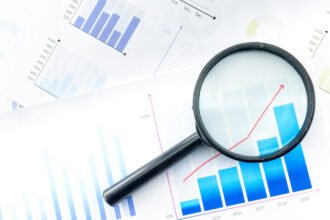The Soccer World Cup, watched by billions around the world, is estimated to bring $12.5B to South Africa and contribute 20% to the country’s GDP growth. Many are using models to figure out the potential winners; from PWC’s recent study to Sorbonne’s Professor Wladimir Andreff whose model gives Germany a 96% chance of making it to the semi-finals (for my humble prediction, click here).
However, no matter how much noise is made around the game, many still remain uninterested. Soccer’s pace deters them: they complain about the monotony of the game, while others say they don’t understand its rules (if you are the latter, here is a guide with all 17 rules listed, including a tutorial for rule 11: the offside rule).
Soccer is very different from American football or baseball…
The Soccer World Cup, watched by billions around the world, is estimated to bring $12.5B to South Africa and contribute 20% to the country’s GDP growth. Many are using models to figure out the potential winners; from PWC’s recent study to Sorbonne’s Professor Wladimir Andreff whose model gives Germany a 96% chance of making it to the semi-finals (for my humble prediction, click here).
However, no matter how much noise is made around the game, many still remain uninterested. Soccer’s pace deters them: they complain about the monotony of the game, while others say they don’t understand its rules (if you are the latter, here is a guide with all 17 rules listed, including a tutorial for rule 11: the offside rule).
Soccer is very different from American football or baseball. The plays in football and baseball are determined and measured in clearly defined increments or “sets.” Soccer, by contrast, is played without hardly any interruption. While football and baseball fans can easily understand the impact of a team’s tactics because they are broken up and highlighted play by play, the analytical-type soccer spectators get bored and think of soccer as a series of uncoordinated activities that sometimes succeed but most times fail.
What can be done to get more people to understand the game? The answer, I think, is “Analytics.” Spectators need the right ones to be shared with them and more often.
Everyone knows that the way to keep score in soccer is the number of goals. Goals, however, are an imperfect measure of overall performance, amplified by the fact that not many are made in the course of a game. Should the performance of a team be appreciated by the final tally only? Or perhaps, is there more to it? In the business world, ever try to run a company with minimal visibility until the numbers are in?
What’s interesting is that the measures necessary to appreciate a game of soccer and players’ performance are known and available. Coaches and expects use them but they are just not well communicated to the general public. Just like business, until the factors of performance are well communicated, understanding of performance is only left to a few. Broadcasters should publish more analytics on the screen, commentators should spend more time discussing the analytics and use their experience to help viewers discern correlation, causality and coincidence between activities and results. The typical “ball possession” and “shots on goal” metrics are often mentioned but how about smarter analytics such passing accuracy, consecutive touches, interception averages for example?
Here are two to consider:
“Who’s the boss” analytic: the player who touches the largest number of balls and/or provides the largest number of assists for shots on goal.
“Penalty” analytics (or should I say “penalytics”): probability of a player to succeed on a penalty kick based on his and the goalie’s past performances. According to ESPN insider, players have the highest probability of scoring by shooting to the top left or right section of a goal. Can we get this information for each player before they take a shot?
Each of these metrics could be monitored in real-time and compared to the team’s and/or comparable teams’ averages. Further, commentators should use them during the game to make predictions (how about predicting at the hour mark who will win the game by the end of the period?). Take a look at this interactive infographic from Chiqui Esteban, Director at lainformacion.com. It tracks ball movement in last week’s game between Spain and South Korea. You’ll notice the large number of passes going to player #22, Navas. Could this have been a leading indicator of Navas’ winning goal?
A lot of the data is available and it should move beyond the closed circle of experts (see what leading clubs like A.C. Milan do with their data here). When data is better shared, when the right analytics are communicated and more often, the game becomes more interesting to more, and better understood by most.
The future of soccer is in its analytics.
I look forward to your feedback on this post or my world cup prediction at bruno@brunoaziza.com. Until then, let the games begin and may the best team win…well, you know what I mean…







